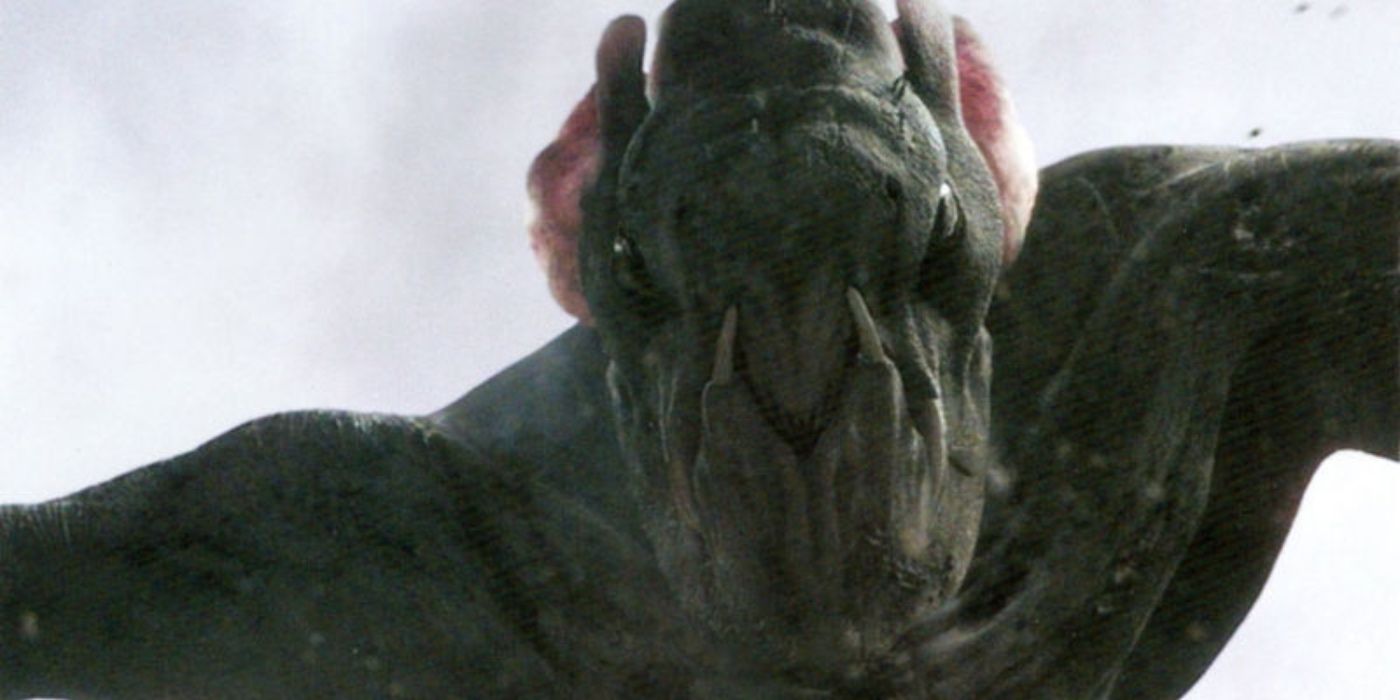
It turns out that the rampaging alien and/or intra-dimensional beast from Cloverfield was just a terrified child looking for its mother the whole time! Even though specifics about the creature's origin, biology, and backstory are barely touched on in the 2008 found footage monster film or its subsequent sequels, the monster was conceived of by its creators as a child.
Producer J.J. Abrams began conceiving of the film during a shopping trip to Tokyo with his young son during promotion for Mission Impossible III. Inspired at the sight of Japanese kaiju toys, Abrams decided that America needed its own giant terrifying monster, one that would be completely different from King Kong and Godzilla, who at that time were both known quantities and were seen as beloved antiheroes in the eyes of cinema-goers. This new creature would be a massively destructive nightmare -- twenty-five stories tall, able to withstand gunfire, artillery shells, grenades, rockets, and riddled with thousands of pit bull sized spider-like parasites whose bite causes victims to expand and burst like blood filled balloons, "Clover", as the monster has come to be known by fans, was really just a lost little kid who wanted his mommy.
To design their monster, Abrams and director Matt Reeves called upon conceptual artist Neville Page, who had worked on films like Minority Report, The Chronicles of Narnia, and Avatar, and was no stranger to movie creatures. Page drew inspiration from the animal kingdom in his design, giving Clover the face and teeth of a piranha, and the grayish cracked skin of an elephant, to name a few examples. While Clover's species has never been given a name, he is amphibious, with frog-like mucous membranes.

For Clover's psychology and behavior, Page looked in an entirely different direction. Page, as well as Abrams and Reeves, didn't want their monster just to be indiscriminately rampaging and killing. It was important to create a "biological rationale" for the creature. Something that would generate some sense of empathy. He designed Clover as a lost child suffering from severe "separation anxiety" that had found itself in an alien (for him) world and was desperately looking for its mother. Clover was lost, confused, terrified, and lashed out in fear and fury.
This psychological approach bled over into Clover's physical design as well: long, thin limbs in relation to the torso, mostly quadrupedal, but able to stand and move on two legs for short periods of time, like a toddler learning to walk. The animal inspirations were incorporated here too, with spooked, horse-like eyes and the violent behavior of a rampaging elephant.
Sequels 10 Cloverfield Lane and The Cloverfield Paradox took the franchise in very different directions, and the movies' connections provided mere hints elaborating on Clover's nature and where he comes from. So far, Neville Page's creation has only appeared properly in the original Cloverfield.
from ScreenRant - Feed https://ift.tt/2TaAVUB

0 comments:
Post a Comment